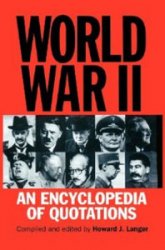Keyes, Adm of the Fleet Lord, Roger John Brownlow (18721945). Br. As a destroyer commander during the Boxer Rebellion, captured four Chinese destroyers by boarding at Taku (1900). In 1914 he was in command of the British submarine force and present at the Heligoland Bight battle. As cos to Adm Carden at the Dardanelles (1915), he did his best to push the naval attack to a successful conclusion and personally organized minesweeping operations in the Straits. He took over the command of the Dover Patrol from the unsatisfactory Bacon at the beginning of 1918 after a period as Director of Plans at the Admiralty and achieved much greater success in preventing U-boats from passing through the Straits of Dover. He was responsible for the spectacular but ultimately unsuccessful Zeebrugge and Ostend attacks in 1918. Perhaps fortunately, he failed to succeed Beatty as First Sea Lord in 1927. In 1940 he was retired, but was an envoy to the King of the Belgians during the German attack. Then appointed to the post of Director of Combined Operations where his immense seniority, enthusiasm for the offensive at all costs and lack of tact were probably counterproductive and his retirement in 1941 probably for the best. However, he can claim some of the credit for the formation of the Commandos. DJL.
Keyes, Lt Col Geoffrey VC (191741). Br. Son of Adm Sir Roger Keyes; led an audacious but poorly planned raid on what was erroneously believed to be Rommel’s HQ in Libya. Mortally wounded during this attack on November 17-18; posthumously awarded the vc for his valour. MS.
Keyes, Lt Gen Geoffrey (1888
1967). US. Deputy Commander to Patton during Seventh US Army landings in Sicily; Commander of US Provisional Corps for rest of Sicilian campaign. (Commander II US Corps throughout the Italian campaign, 1943-45.
KGB. Russian committee of state security, since 1953 name of the secret police of the USSR: supposed to have over 250,000 employees, frontier guards, interrogators, and spies at home and abroad. One head of kgb, Yuri Andropov (1914-84), rose to be head of state.
Khaki (derived from the Persian for “dust-coloured”). Shade adopted by British Army for field service uniform from 1840s in India. In more general use from 1880s.
Khalkhin Gol see NOMONHAN INCIDENT.
Kharkov, Battles of (1942 and
1943). In spring of 1942 both the Soviet and German High Commands laid plans for offensives on the southern flank of the line around Kharkov. Marshal Timoshenko’s Southwest Front hoped to carry out a pincer movement against the German Sixth Army and seize Kharkov while Army Group South’s Operation “Fridericus” was intended to reduce the Soviet salient around Izyum. The Red Army struck first on May 12 and opened large gaps in the German line, pressing to within 11 miles (18 km) of Kharkov itself on the first day. It only remained for Timoshenko to throw in his armoured reserves in order to complete the encirclement of von Paulus’ Sixth Army. But the Southwest Front commander failed to act and Field Marshal von Bock was able to launch “Fridericus” as a counteroffensive. Belatedly, on the 17th, Timoshenko committed his follow-up forces but they were confronted by von Bock’s offensive, which was strengthened by substantial air support. Although the Soviet forces endeavoured to resume their advance, German resistance had stiffened and a powerful attack from the III Panzer Corps and the Seventeenth Army made substantial inroads into the Southwest Front’s south flank. Too late Timoshenko realized the threat to his rear and, on the 19th, ordered a halt to his offensive and a redeployment of his forces. But the Germans completed their encirclement on the 22nd. For the next six days they completed their destruction of Timoshenko’s command, taking nearly a quarter of a million prisoners. Kharkov finally fell to the Red Army in February 1943 but was retaken the next month during Army Group South’s coun
Teroffensive. However, on August 3 an overwhelming Soviet attack was launched by the Voronezh, Steppe and Southwest Fronts. Recommendations that Kharkov be evacuated were refused by Hitler but by the 20th even he had to concede that the city might have to be relinquished. With their
Ammunition exhausted and
Threatened with encirclement, the German Eighth Army withdrew from the city and, on August 23 1943, Kharkov changed hands for the last time. MS.
Khe Sanh, siege of (1968). For much of 1967, the People’s Army of Vietnam (pavn) probed US Marine outposts along Route 9 just below the demilitarized zone. In response, the Americans and South Vietnamese increased the force at Khe Sanh near the Laotian border from a US Marine rifle company to
6.000 men. The pavn laid siege to Khe Sanh beginning January 21 1968, maintaining pressure with massive artillery barrages and ground assaults for 77 days.
Many observers, including President Johnson, believed that the PAVN objective was to create “another Dien Bien Phu”. North Vietnamese strategists, however, realized that overrunning Khe Sanh was impossible as long as the Americans were determined to hold it. The pavn’s main purpose was to draw American forces away from cities slated for attack on January 31. In this they succeeded, as the US Command dispatched 15,000 troops to reinforce other Route 9 outposts and used
50.000 troops to support Khe Sanh. For days after the attacks on the cities began, both Gen William Westmoreland and President Nguyen Van Thieu maintained that the “real” target of the Tet offensive was Khe Sanh. WST.
Khmers Rouges. The Indochinese Communist Party divided into three national parties for Vietnam, Laos and Cambodia in 1951. Dubbed by Prince Norodom Sihanouk the “Khmers Rouges”, or “Red Cambodians”, the Cambodian communists became increasingly radical and xenophobic after the election of Pol Pot as secretary general in 1963. During the Civil War (1970-75), the Khmers Rouges turned peasant youths




 World History
World History









